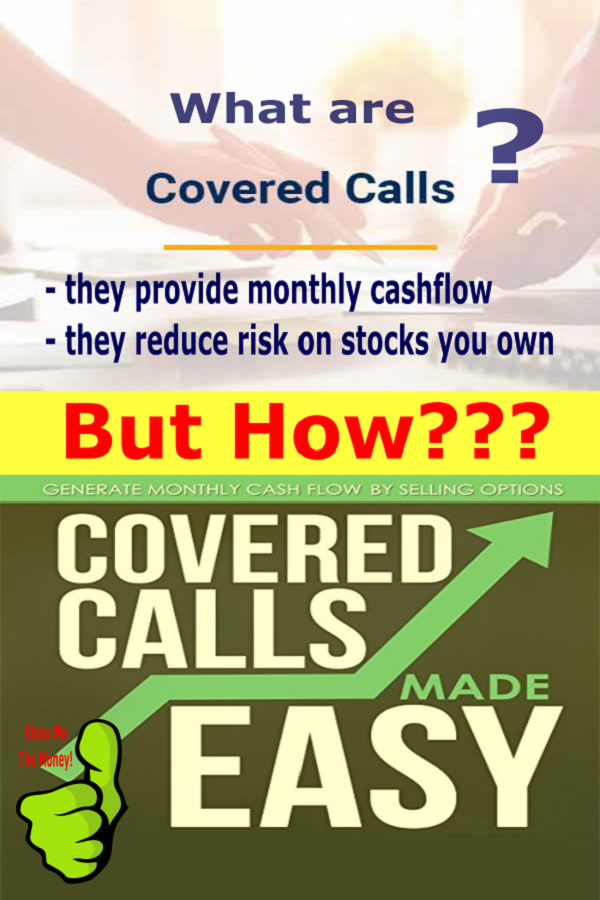Search Options Trading Mastery:
- Home
- Covered Calls
- Covered Call Examples
Covered Call Examples
The following are a comparison of various covered call examples and related strategies, based on the table below. They are actual historical figures taken from the OptionsXpress free covered call screener.
| EXAMPLE STOCK | STOCK PRICE | OPTION PRICE | STRIKE PRICE | RETURN IF NOT CALLED | RETURN IF CALLED |
| 1 - ABC | 25 | 2.5 | 25 | 10.00% | 10.00% |
| 2 - DEF | 24 | 2 | 25 | 8.330% | 12.50% |
| 3 - GHI | 26 | 3 | 25 | 11.54% | 7.69% |
| 4 - JKL | 50 | 4 | 50 | 8.00% | 8.00% |
| 5 - MNO | 48 | 3.5 | 50 | 7.29% | 11.46% |
| 6 - PQR | 52 | 6 | 50 | 11.54% | 7.69% |
Observations From the Above Table
You'll notice that our covered call strategy options above are based on two different option strike prices, (25, 50) but in each case, there is a difference between the current stock price and the strike price.
The "Return if Not Called" column tells us the percentage return on risk that we can expect if the underlying stock price is not above the short call options strike price at expiration date, so that we only receive the benefit of the call premium.
The "Return if Called" column shows the expected return on risk if the stock price IS at or above the short call strike price at expiration and our shares are called away - i.e. options are exercised and we have to sell.
Selling the stock for the strike price means the maximum potential profit we can realize on the shares is the difference between the purchased price and the strike price.
Covered Call Example 1
We bought 100 shares of ABC for $25 per share - total cost $2,500 ($100 x $25).
We then sold the $25 call for $2.50 per share, receiving an income of $250 (100 x $2.50).
If the stock price stays at $25 or higher our shares will be "called out" and make $250. This is 10 percent profit on our $2,500 investment in the stock.
Covered Call Example 2
We bought 100 shares of DEF for $24 per share - total cost being $2,400 (100 x $24).
We then sold the $25 call for $2 per share, receiving $200 income (100 x $2).
If the stock price stays at $25 or higher our shares will be "called out" and make $300, which is $200 from the options and $100 gain on selling the stock.
$300 is 12.5 percent profit on our $2,400 risk on the shares.
Covered Call Example 3
We bought 100 shares of PQR for $52 per share, for a total cost of $5,200 (100 x $52).
We then sold the $50 call, receiving $600 income (100 x $6).
If the stock price stays at $50 or higher at expiry date, our shares will likely be "called out".
Our overall profit will now be only $400 because by selling the shares at the strike price, we will make a loss of $2 per share. So $600 - $2 x 100) = $400 profit.
Our $400 profit is 7.69 percent on our $5,200 risk on the shares.
Summarizing our 3 Covered Call Examples
We can readily see from the above 3 examples how our choice of covered call strategy will produce different profit results.
These potential profit results also involve differing risk profiles on the shares themselves.
Example 1 sold "at-the-money" options.
Example 2 sold "out-of-the-money" options.
Example 3 sold "in-the-money" call options.
The last example gives us the greatest protection against a fall in share price ($2) but the lowest potential return on risk.
***************** *****************
Return to Covered Calls Contents Page
Go to Option Trading Homepage















New! Comments
Have your say about what you just read! Leave me a comment in the box below.